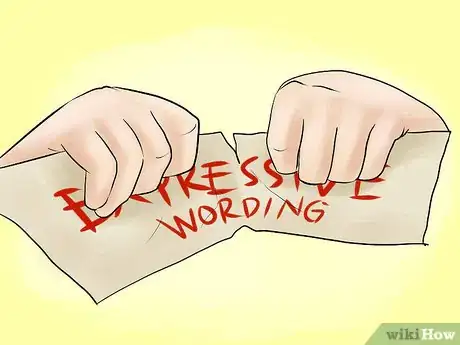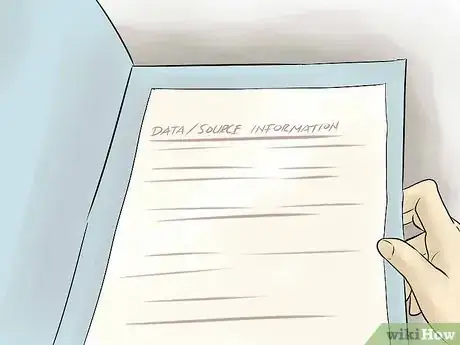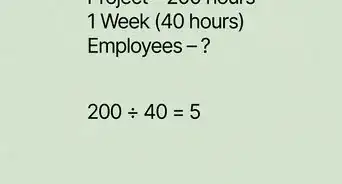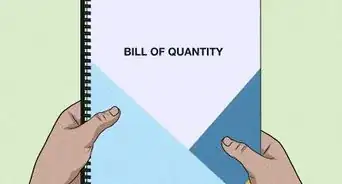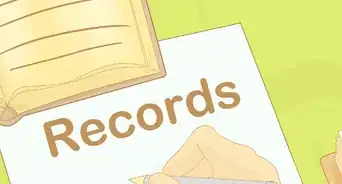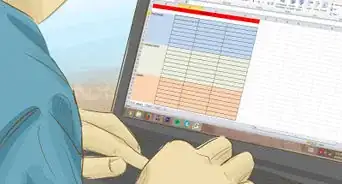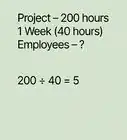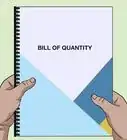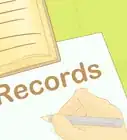wikiHow is a “wiki,” similar to Wikipedia, which means that many of our articles are co-written by multiple authors. To create this article, 19 people, some anonymous, worked to edit and improve it over time.
wikiHow marks an article as reader-approved once it receives enough positive feedback. This article has 13 testimonials from our readers, earning it our reader-approved status.
This article has been viewed 432,422 times.
Learn more...
Progress reports are an important part of project management, whether it's your dissertation or a project at work. You'll need to use these to keep your supervisors, your colleagues, or your clients updated about the project you're working on. You'll be focusing on what you've accomplished and what still needs to be done.
Steps
Beginning the Process
-
1Figure out what your purpose is for the proposal. There are a variety of different reasons someone asks you to write a progress report. Obviously for any of them it's to show what kind of progress you've achieved on a specific project. However, there are some different types of proposals that you'll need to consider.[1]
- Progress report for a research program or project is going to be slightly different than for a project at work. In this case you are more likely to need to cite information and are less likely to need to consider things like cost (although not always).
- A work report for a client is going to read somewhat differently than for a superior at work. You'll need to consider why you're writing this report for them.
-
2Consider your audience. When you've sorted out the purpose of writing your progress report, you need to consider the kinds of things that your audience is going to need to know in the report. While all progress reports have general things they tend to include, you'll need consider the specifics:[2]
- How are your readers connected to the project? How will the outcome of the project affect them? (The connection and how they're affected is going to be different for your superior than for the client, for example.)
- Consider what decision your readers are going to need to make after reading the progress report (what support, money, time are they investing, for example.
- Consider the information your reader is going to need to know to oversee and participate in the project effectively. What technical aspects of the project will they need to know. Are they comfortable with technical jargon?
Advertisement -
3Decide on the best way to communicate with your audience. A progress report isn't only a written document that you send to your superior or your professor. It can take a number of forms depending on what is needed.[3]
- A progress report could be a brief oral report at weekly or monthly staff meetings.
- It could be periodic emails to colleagues.
- It could be formal or informal memos to supervisors.
- It can also be formal reports for clients or government agencies.
-
4Check with your supervisor. Unless you've written this specific type of progress report before (in which case, why are you on here?), you'll want to get as much guidance from your superiors. There may be a specific format that your company uses, in which case you'll want to be sure you follow the rules for that.
-
5Consider your tone. Not all progress reports need to be formal. In fact, internal reports for colleagues or supervisors often tend to be more informal in tone. This is why it's so important to check with your supervisor for what they are likely looking for.
- When it comes to information for a client or government agency, or thesis review board, you err on the side of formality.
- No matter the formality or informality of your tone you want it to be clear, focused, and honest.
Writing Your Report
-
1Decide how you want to present your material. By the time you start writing your report you'll already have figured out what the tone needs to be and the point of the report. Now you need to decide the best way or ways in which to present that information.[4]
- You might choose to do a bulleted list. It's a very clear way to present the material and it's easy to skim and still get the needed information. However, it can be a slightly less formal way of writing a progress report so it might be better to use it for memos to supervisors and emails to colleagues.
- You may also consider adding in graphs or tables. This might be especially good if you're writing a progress report for a project in which you're trying to get funding, or show why you deserve the funding you've been given.
-
2Consider using subsections. To write a successful progress report you want it to be as clear as possible. Splitting your report into subsections is a great way to cluster all relevant material together.[5]
- Adding subheadings to your can make this even clearer, because it lets your readers or audience know what to expect in each subsection. If there is material that they are particularly interested in they'll be able to jump right to that part.
-
3Write the heading. This typically goes across the top of the paper, if you're using a page format. Again, it will depend on what your company or university prefers, so make sure you check in with them.
- The heading should include the date, when the report was submitted, the name and the position of the recipient, the writer’s name and position, and the subject of the report.
-
4Write the introductory section. The introductory section goes below the heading. It can often be set apart from the rest of the material through italics. It gives a brief overview of the project, and summarizes its status. You will be establishing what progress has been made, and whether certain goals have been achieved.[6]
- Make sure to include: the purpose of the report, introduce the project, remind that this is an update on the progress of the project.
-
5Do the body of the proposal. The body of proposal, whether it's broken into sections and subsections, is basically just a more detailed version of the introduction. Consider the information you've put into the introduction and make sure to expand on that information.
- Specify tasks that have been accomplished since the last report and what tasks are ongoing.
- Discuss problems that you’ve encountered, issues that need to be addressed, and potential solutions for those problems and issues.
- Address changes that have happened and why they needed to be made.
- You can also include things like personnel changes, difficulty in obtaining material, what cost overruns you may have encountered, any delays or problems with technology or security.
-
6Address what is next for your project. While this is still basically part of the body of the report, you want to make sure that your audience understand where you're going with the project. Make sure that you state what problems might affect the deadline for completion, the budget, or the management structure.
- You really do want to make sure say whether the deadline for the project has changed or not.
- Avoid sugarcoating any problems for your audience, but don’t alarm them unnecessarily or promise anything you can’t deliver.
-
7Add in total hours worked. You will need to show how much work you and your team (if you have one) have put into the project. This will show your audience (whether it's your supervisor, your clients, or a government agency who might give you money) that you've been working hard.
Avoiding Common Difficulties
-
1Make sure you stay on topic. As long as you stick the basic information outlined above, you should be fine. You really want to avoid wandering off into other areas only marginally related to the project, interesting though they may be.
- For example: if your project is about reigniting a local, nonprofit arts organization, it might be tempting to go off into a discussion of the deplorable state of arts funding, but it won't really help detail how your project is coming along.
-
2Keep it simple. The point of a progress report is to get across the progress you're making, without overwhelming your audience with words and ideas. All you need to focus on are how a particular project is coming, what still needs to be worked on, and what changes made need to be made.
- Depending on who you're writing the report for you might be cut down to a specific page limit. A good rule of thumb is to keep it as short as possible, while making sure that you fit in the appropriate information.
-
3Try to avoid being too vague. You need to make sure that you give specific details on where you're at in your project.[7] For example: you would want to avoid saying something like "We're making good progress on getting our arts funding" and instead say "with the two $5,000 grants from these different foundations, we are just $2,000 short of our $12,000 goal."
-
4Cut down on expressive wording. Again, you want your report to be clear and concise. You don't want to overwhelm your audience with wording that doesn't add anything to the report. For example, phrases like “complete catastrophe” or “giddy success” are too emotional and too vague to be of use to clients or supervisors.[8]
-
5Cite your sources. Any information you use that comes from an outside source, any graphs or data, needs to be properly cited. You can add an additional sources cited page to your progress report.
Community Q&A
-
QuestionHow could I find infographics to use in my reports?
 Community AnswerMaking them yourself is generally the simplest way, as far as legality and accuracy of data is concerned. If you don't know how to, try using a spreadsheet program. An internet search could also provide valuable information.
Community AnswerMaking them yourself is generally the simplest way, as far as legality and accuracy of data is concerned. If you don't know how to, try using a spreadsheet program. An internet search could also provide valuable information. -
QuestionWhat should the subject of my report be?
 Community AnswerThere are a lot of subjects that you could report on. Start with questioning yourself on what's relevant for you or what does a specific thing can do good to you or to other people. Sticking to topics that are interesting to research about is a good place to begin.
Community AnswerThere are a lot of subjects that you could report on. Start with questioning yourself on what's relevant for you or what does a specific thing can do good to you or to other people. Sticking to topics that are interesting to research about is a good place to begin.
Warnings
- In order not to be caught unprepared when it's time for a progress report, it's a good idea to record information as you go along so it's easy to put all the information together.⧼thumbs_response⧽
References
- ↑ https://pressbooks.bccampus.ca/technicalwriting/chapter/progressreports/
- ↑ https://pressbooks.pub/coccoer/chapter/progress-reports/
- ↑ https://ohiostate.pressbooks.pub/feptechcomm/chapter/2-audience/
- ↑ https://pressbooks.bccampus.ca/technicalwriting/chapter/figurestables/
- ↑ https://www.e-education.psu.edu/styleforstudents/c6_p10.html
- ↑ https://pressbooks.bccampus.ca/technicalwriting/chapter/progressreports/
- ↑ https://pressbooks.pub/coccoer/chapter/progress-reports/
- ↑ https://www.e-education.psu.edu/styleforstudents/c6_p10.html
About This Article
To write a progress report, start by deciding how you want to present your info, like with a bulleted list or a graph. You can also add subsections to your report, which can help keep things clear and easy to follow. Then, write your heading across the top of the paper and include relevant details like the date and subject of the report. Below that, add an introduction using italics to give a brief overview of the report. Next, include details in the body, like specific tasks you worked on, and conclude it by addressing what’s next for your project. To learn why considering your audience can help you write a progress report, read on!















